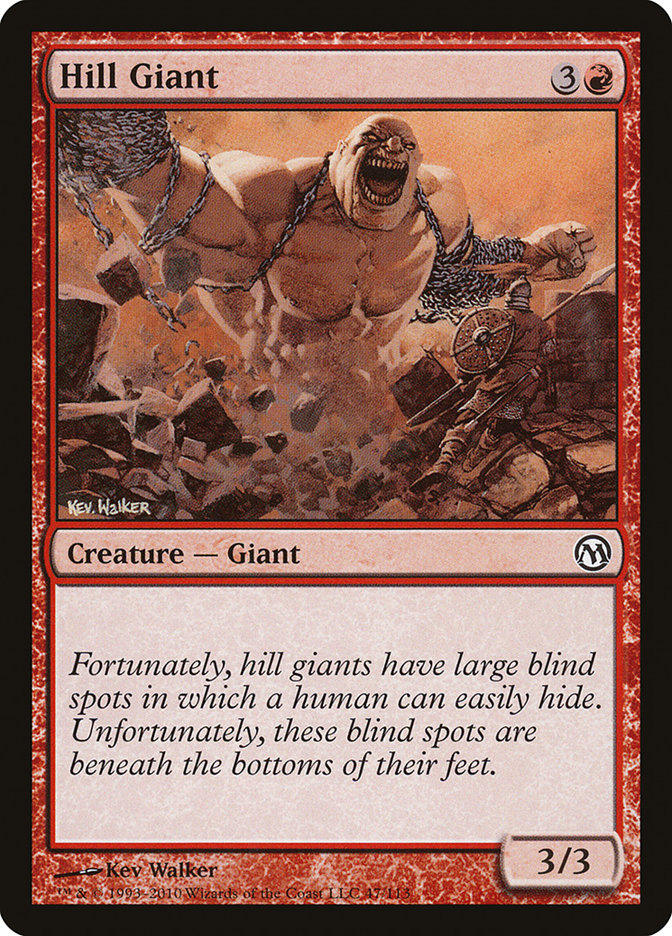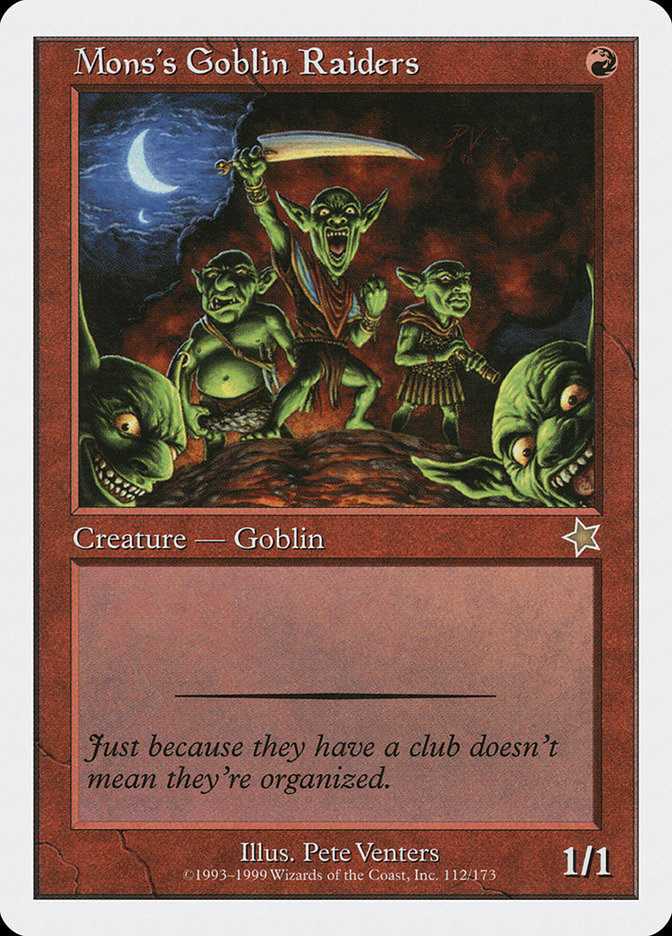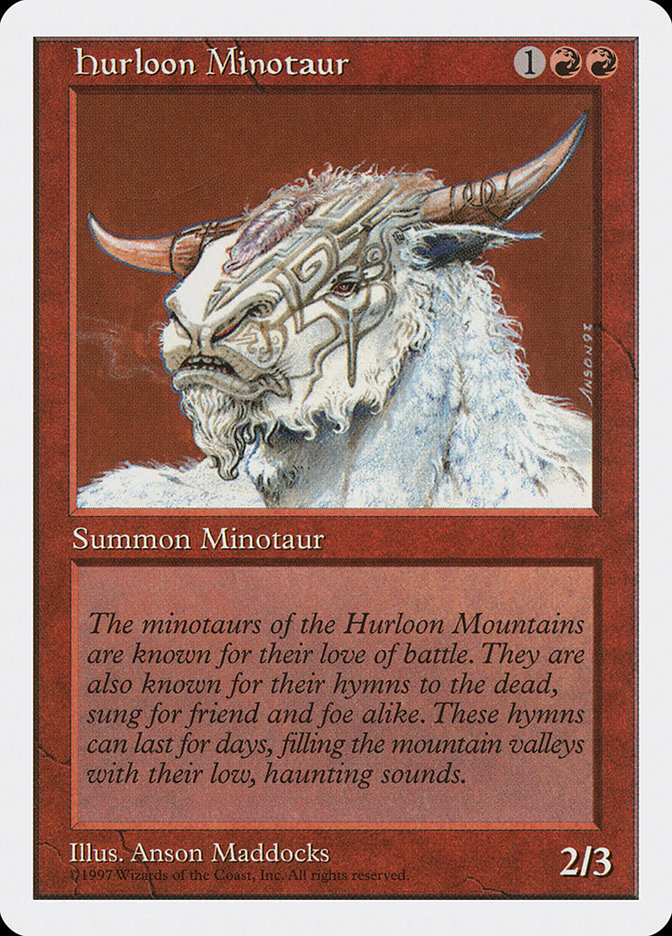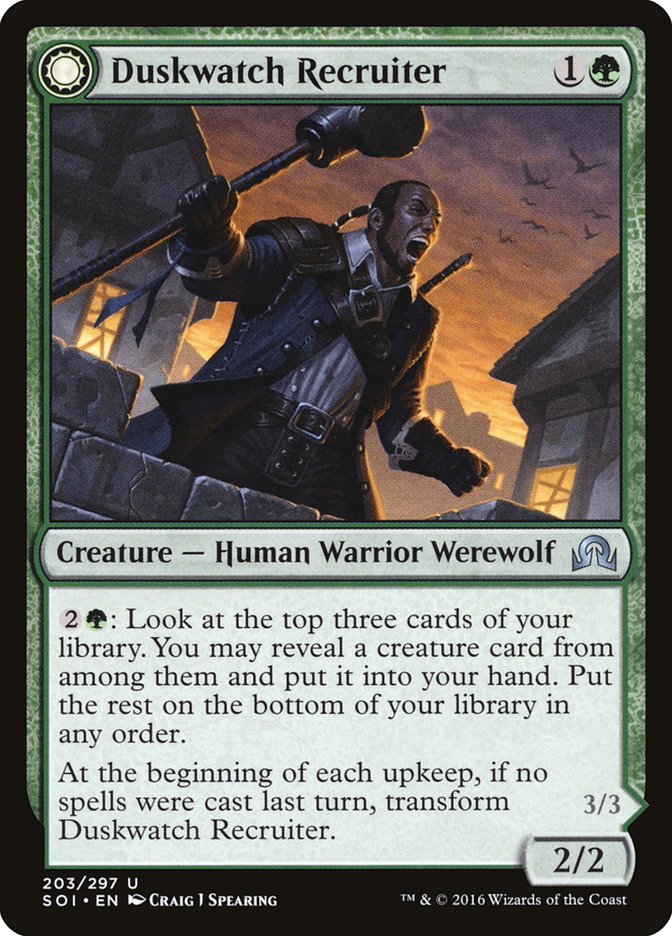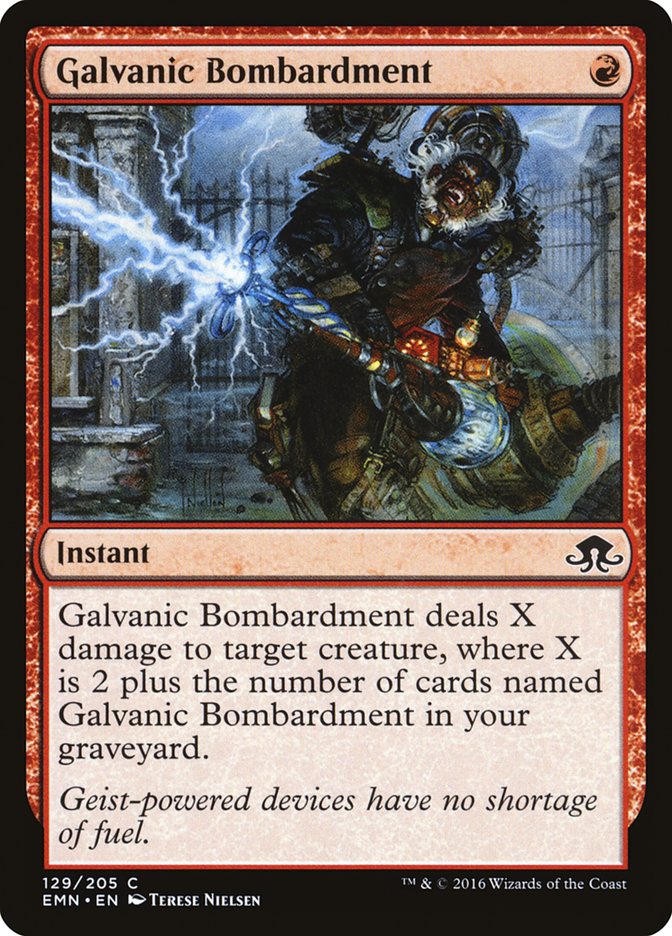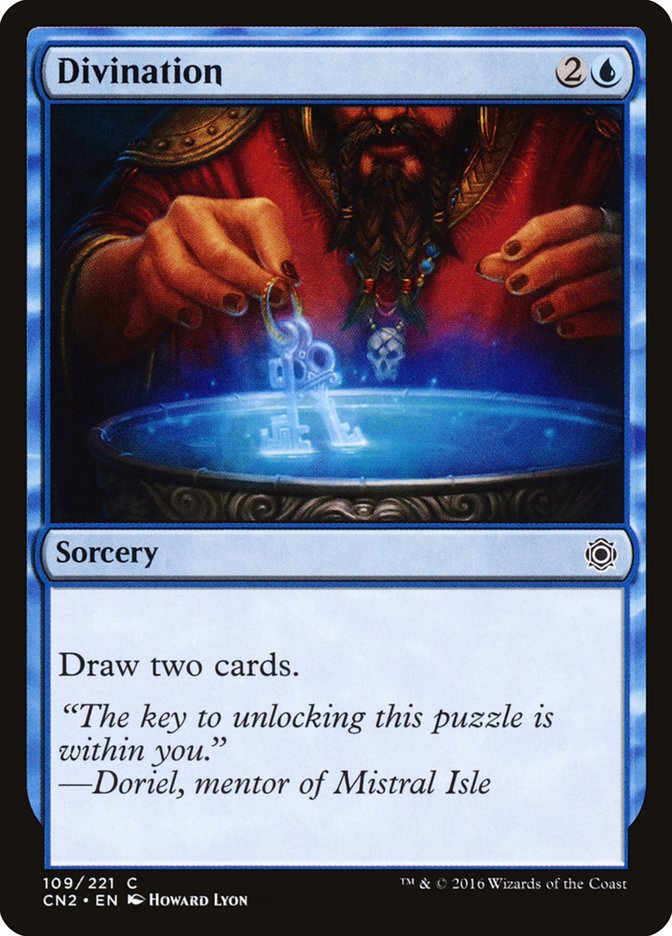Just as drafting doesn’t use the exact same skills as playing a game of Magic, evaluating Magic cards also employs some different skills from what we’re used to while in a match. Most Magic players never work on honing this skill, either planning to rely on “netdecking” or just not being conscious of it. Even most pro players would benefit from a little work towards improving their card evaluation skills, and not just when a new set comes out.
Evaluating Magic cards begins with understanding them.
What is this card’s purpose?
It’s important to keep an open mind, to look at the card from a variety of angles. Identifying one purpose for a card doesn’t mean that is the only purpose the card has. It’s better to identify all of the interesting components of the card.
- What does it do particularly well? In order to understand what a card is good at, we need to know what it does that is novel or potentially stronger or more efficient than alternatives. For instance, Ceremonious Rejection is more mana-efficient than other options, like Negate.
- What cards we might play change its value? Glassblower’s Puzzleknot synergizes with cards that use energy, cards that care about the top of your library, cards that reward you for artifacts, and cards that, when drawn at the right times or in the right combinations, have a disproportionately large impact.
These two questions are about understanding the surface of a card and how it fits into a format. At their core, they are about understanding the card’s rate (how powerful/efficient/good it is) and the card’s synergy with the other cards. That said, those are only two dimensions to card evaluation, and it’s actually a three-dimensional business.
- Rate – How does it compare to other cards we could use instead of it?
- Synergy – How does it work with other cards we can use with it?
- Interaction – How does it fare against other cards we expect people to play?
That third dimension is tricky, requiring understanding of many other cards and how the community perceives them Typically, we start with the first two dimensions, and as we build our understanding of the format, we continue to update our perspective on how the cards line up against the format. For instance, what cards that others might play change its value? The more people play Doom Blade, the worse Baneslayer Angel gets. However, the more people play Lightning Bolt, the better she gets. We want to be sure not to overreact to what we see or learn, but as we figure out which cards are likely to be popular, we can adjust our assessments of how cards match up against “the format.”
Before we can determine how a card’s rate is impacted by opposing cards, we first need to evaluate what its rate, in general (for a format like this), to the best of our ability. How do we do that?
Evaluating Rate
Rate is a way of looking at a card’s efficiency. It’s like you’re looking at the effect of the card divided by the cost.
Rate = Effect/Cost
How “good” of a rate a card has is a function of the context you’re evaluating it in. Counterspell would be busted in Standard, would be a very powerful format-changing card in Modern, is niche-playable in Legacy, and is basically unplayable in Vintage.
The cost of a card is more than just its mana cost, although that is typically a big part of it. It’s also the card itself. Every card has a fundamental opportunity cost in that every card you draw could have been something else. Finally, some cards have other costs associated with them, such as payment of life or sacrificing a creature.
The effect of a card is what resources it gives you or takes away from your opponent. Resources give you more or better options, and the point of a game of Magic (at least from a game-winning perspective) is to remove your opponent’s option to continue to play the game.
There are three basic types of resources:
- Cards
- Mana
- Life
Cards
“Cards” is really a shorthand for raw materials, and it encompasses not only the cards you draw but also the permanents you have on the battlefield (including tokens) and anything impacting the game from another zone (such as your graveyard).
Not all permanents are created equal. After all, a 3/3 is usually worth more than a 1/1. However, what about two 1/1s?
There are different degrees of focus we can use, depending on how deeply we are looking. If we are looking at how they match up against spot removal, we might conclude the two Goblins are worth more. It would take two Lightning Bolts to stop them both and just one to stop the Hill Giant. In such a scenario, we are valuing the “body” (the card) rather than the stats.
However, if we were facing a Hurloon Minotaur, we are now making a comparison between stats. The value of stats is dynamic depending on the battlefield state. After all, a Hill Giant might be better than two Goblin tokens against Hurloon Minotaur when we’re both at twenty life, but what about when we’re both at one?
In general, we use baselines in order to have a framework for comparing cards. The most common baseline is how much stat you get on a card for how much mana. For instance, here’s a rough ballpark of what we usually get for a card plus each of these costs. In general, a card has to give us “more” than this to be “good,” (which can be text on the card, abilities like flying, or even just a useful creature type).
|
Casting Cost |
Stats |
|
C |
2/1 |
|
2 |
2/2 |
|
1C |
3/2 |
|
CC |
3/3 |
|
2C |
3/4 |
|
1CC |
4/4 |
|
3C |
5/4 |
|
2CC |
5/5 |
|
4C |
6/5 |
|
3CC |
6/6 |
|
5C |
7/6 |
|
4CC |
7/7 |
Now that we’re starting to think of the difference between cards in terms of mana, let’s take a minute to talk about the second kind of resource, Mana.
Mana
This type of resource is about the mana in your pool (or that could be), which is not to be confused with lands you have that tap for mana. It’s a temporary resource that will dissipate if not used. When people talk about “tempo,” that is a shorthand for “temporary resource.”
When you spend two mana to cast a Duskwatch Recruiter and your opponent spends three mana to Murder it, you gained a mana worth of tempo. However, if they cast a Galvanic Bombardment on it, they gained a tempo (not to mention having Galvanic Bombardment in the graveyard now, which makes other Galvanic Bombardments more powerful).
This advantage is temporary and whether it turns into a long-term advantage depends on the game state and your plays. If you have three lands on the battlefield when you cast that Duskwatch Recruiter and then never use that land, it is like you lost a mana. Of course, you can only play with the cards you have access to. Sometimes there’s no way to not waste mana.
However, it is crucial to remember that conserving mana is not the most important goal. For example, imagine it’s turn 12 and both players have far more lands than they need. Wasting a mana in a spot like this means very little. It gives your opponent a very tiny amount of information about how much mana worth of cards you could potentially play at instant speed, but in general, mana is only worth what you can convert it into before your mana pool clears.
While mana is sometimes directly converted into cards, by way of plays like Divination (which converts three mana and a card into two cards), more commonly, mana is traded for influence over card quality. If you spend two mana to cast a Duskwatch Recruiter, leaving one land up, you can use a Blossoming Defense to protect it from your opponent’s removal spell. However, if you have another two-drop in your hand, you might be missing the opportunity to cast two creatures in the same turn, next turn. All of these trade-offs, all of these considerations, are the sorts of options we usually think of when considering a game of Magic.
In general, more mana gives you more options but the value of mana is a temporary one that can be very important in one moment, worthless in the next. Making good decisions with how to spend your mana? Well, that’s the heart of playing skillfully.
Life
This resource is what keeps you from dying. Your life total is the main one, but sometimes cards left in your library or poison counters you can take before dying are relevant. While mana is highly relevant to what options you have now but matters little later, your life total matters little for impacting your options now but is highly relevant to what options you have later.
Sometimes we are willing to give up cards or tempo to get an advantage in the life department, such as chump blocking to prevent damage that would kill you or Fireballing your opponent’s face. Other times, we are willing to give up life to gain some cards or tempo, such as activating Ob Nixilis Reignited or not blocking a Veteran Motorist with your Servant of the Conduit.
Card Quality
Okay, let’s go back and look at that baseline again:
|
Casting Cost |
Stats |
|
C |
2/1 |
|
2 |
2/2 |
|
1C |
3/2 |
|
CC |
3/3 |
|
2C |
3/4 |
|
1CC |
4/4 |
|
3C |
5/4 |
|
2CC |
5/5 |
|
4C |
6/5 |
|
3CC |
6/6 |
|
5C |
7/6 |
|
4CC |
7/7 |
In general, adding a mana to give a creature +1/+1 is somewhat “fair,” though creatures with abilities generally would consider it a slight drawback since it means another turn without the benefit of that ability. Additionally, the value of a particular set of stats is also a function of how much the card is planning on attacking or blocking, as well as which removal spells people play. A three-drop that wants to attack would rather be a 4/1 than a 1/4, but a creature with a tap ability you plan to use most of the time might get more mileage out of the extra points of toughness.
Everything else being equal, power is slightly better than toughness more times than not. This is because the value of every point of power contributes meaningfully towards reducing your opponent’s life total. Extra toughness, however, can be wasted.
A vanilla creature with a smaller body than the above is said to be “below rate.” However, creatures with abilities are frequently smaller than the above chart suggests. The difference between the cost you paid and the value of the stats you got is how much you are paying for whatever abilities it has.
How much are abilities worth? That depends on the rest of the creature. A 4/1 creature gets a lot more mileage out of haste than a 1/4 does, while a 1/4 is generally going to get more use out of deathtouch than a 4/1. In general, though, there are three power levels of abilities.
Minor (worth around half a mana or less):
- Prowess
- Reach
- Trample
- Vigilance
Medium (worth between a half and a full mana):
- Deathtouch
- First Strike
- Flying
- Haste
- Double Strike
- Hexproof
- Indestructible
- Lifelink
- Does this card suggest new archetypes?
- Does its creature type or card type matter?
- Are there cards that explicitly reward you for using a lot of a mechanic?
- Does it combine with any other card to be worth more than the sum of the parts?
- Does it fit in any existing strategies?
- Does it line up well against any existing strategies?
- How does it compare to the other new cards?
- What are the new mechanics?
- What doesn’t the new card or set help?
- What answers does the new card or set not solve?
- What new cards don’t have obvious counters?
- Where will people start in the format?
- Where will they turn?
- What cards from previous sets is this card like?
- What decks from previous formats could use a card like this?
Major (worth a full mana or more):
Each ability needs to be evaluated in the context of the creature with it. For instance, a 2/2 creature with double strike is sort of like a 4/2 creature with half the value of first strike, plus a bonus if you have ways of increasing your creatures’ power.
Creatures with an enters-the-battlefield ability are sort of like a body with stats and a sorcery that does whatever the ability says. Often these triggered abilities are effects so minor we might not want to spend an entire card on them, but they can be quite valuable as part of the package deal. A good way to figure out how much you are paying for the enters-the-battlefield trigger is to evaluate how much the card would cost if it didn’t have that ability (as detailed above) and then compare it to the actual cost.
Some cards have additional costs that go along with them. For instance, some lands enter the battlefield tapped. This makes them functionally “cost” one mana. Cards that do damage to us aren’t super-common, but there are some. Measuring the value of life invested in creatures is pretty easy, since life is a resource that has value we work with in so many other areas. In general, cards tend to be worth about two life and/or mana. While the value of mana and life can fluctuate wildly throughout the game, they are surprisingly closely in value in the abstract.
Some cards have variable power levels, depending on if you are willing to do what the card asks. For such cards, we can look at the card’s floor and then determine how much we are paying for the ability. Then we look at the “upside” and how much better it is than we’d normally get, and we make an evaluation of how often we’ll meet the condition (such as landfall for a Scythe Leopard).
It’s important to remember who is designing the cards! It isn’t foolproof, but in general, WotC is going to try to make iconic characters good, fun mechanics good, and some tournament-quality cards of each type. When you compare the various options, one of them was probably pushed the hardest.
Key Questions to Ask When Evaluating New Cards
Card evaluation is a monstrously deep subject, and developing tools for better thinking about it is a muscle we need to work out regularly to strengthen. And the dividends? Outside of being able to build decks better, draft better, and figure out the good cards before they go up in price, there is another big one that is often overlooked…
The player who understands better how to evaluate cards in the abstract will find themselves evaluating cards and decisions in-game substantially better.


